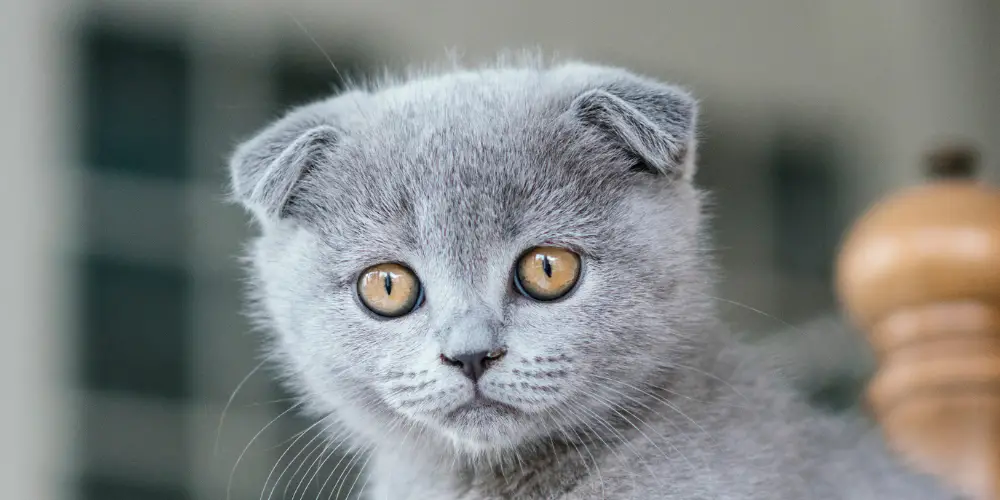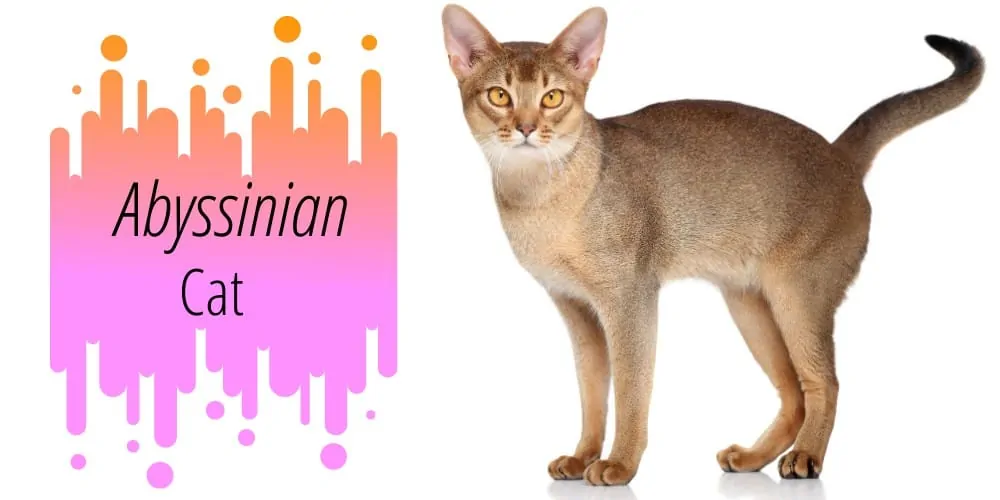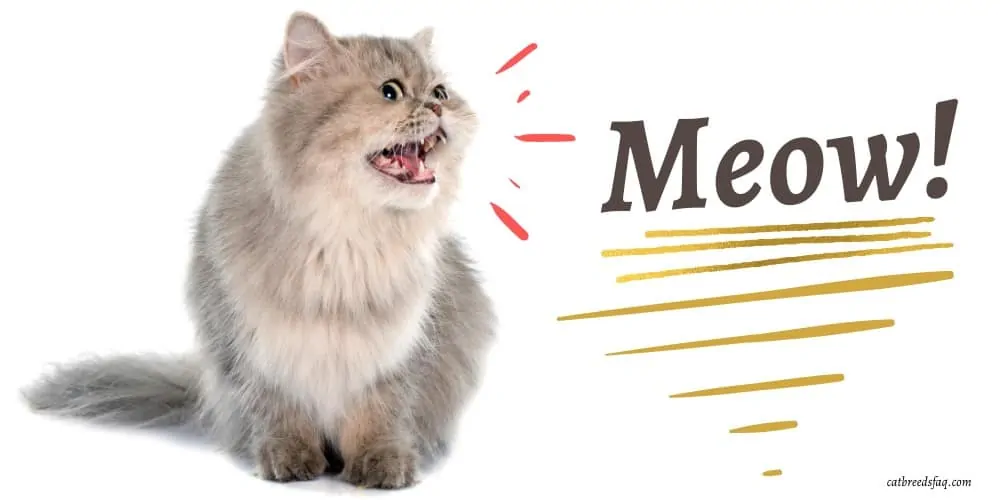Cats with floppy ears are not just another feline breed but a testament to the diverse and enchanting world of feline genetics.
Their distinct ear fold, drooping forward and downward, gives them a unique charm that’s hard to resist.
I recall meeting “Whiskers,” a Scottish Fold, whose floppy ears and playful demeanor left an indelible mark on my heart. This guide delves deep into the world of these captivating cats.
3 Popular Cats with Floppy Ears
Floppy-eared cats have captured the hearts of many with their distinctive and endearing appearance.
While several breeds might exhibit a slight fold or unique ear shape, few are recognized for prominently floppy ears. Let’s explore the most popular breeds known for this unique trait.
1. Scottish Fold
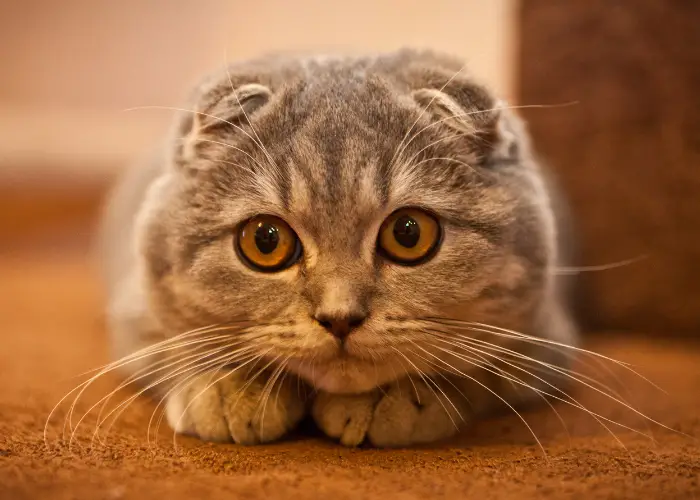
Origin
The Scottish Fold’s origins trace back to Scotland in the 1960s, where a white barn cat named Susie was discovered with unique folded ears.
This genetic trait led to the establishment of the Scottish Fold breed, which has since gained global recognition.
Characteristics
Their most defining feature is the folded ears, ranging from a single fold to a more pronounced double or triple fold.
Combined with their round faces and large expressive eyes, they have a distinctive appearance that’s hard to miss.
Temperament
Scottish Folds are known for their gentle, playful, and sociable nature. They form strong bonds with their human companions and are often described as “dog-like” in their behavior.
Health
While generally healthy, Scottish Folds can be prone to certain genetic conditions, including osteochondrodysplasia, which affects bone and cartilage development.
2. American Curl
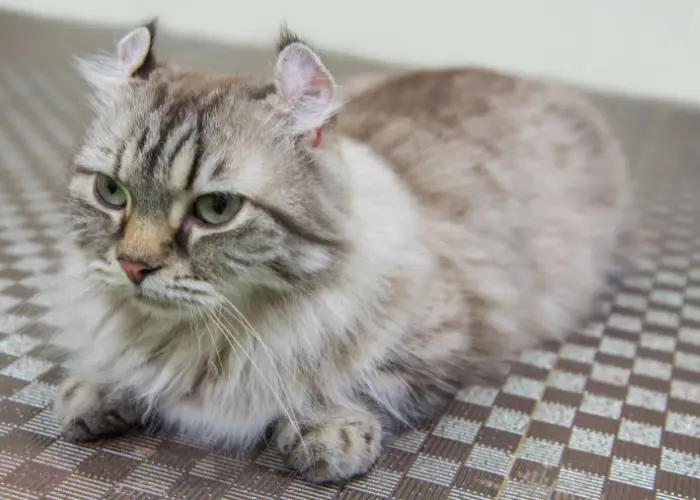
Origin
The American Curl’s story began in California in the 1980s when two stray kittens with unique backward-curled ears were discovered.
This spontaneous genetic mutation led to the development of the American Curl breed.
Characteristics
The breed’s name is derived from its ears, which curl backward, giving them a distinctive silhouette. They have a graceful, slender physique and almond-shaped eyes.
Temperament
American Curls are affectionate, adaptable, and playful. They get along well with children and other pets, making them excellent family companions.
Health
American Curls are generally healthy, but keeping their unique ears clean is essential to prevent potential infections.
2. Oriental Shorthair
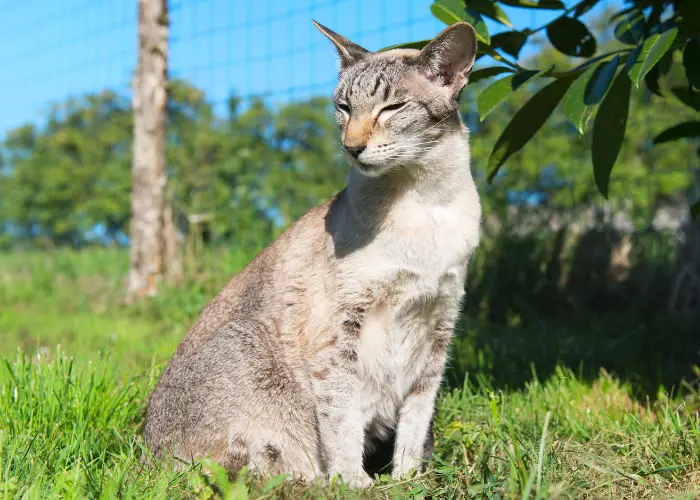
Origin
The Oriental Shorthair is a breed that originated from the Siamese. It was developed in the UK in the 1950s and 1960s.
Breeders aimed to create a cat with the Siamese’s sleek body but with various coat colors and patterns.
Characteristics
While not all Oriental Shorthairs have floppy ears, some exhibit slight folds or droops.
They have slender, muscular bodies, almond-shaped eyes, and wedge-shaped heads. Their coat is short, glossy, and lies close to the body.
Temperament
Known for their high energy levels and vocal nature, Oriental Shorthairs are friendly, intelligent, and affectionate. They thrive on human interaction and can be quite talkative.
Health
Oriental Shorthairs are generally healthy but can be prone to certain genetic conditions common to the Siamese, such as dental and heart issues.
Each of these breeds, with their unique histories and characteristics, adds to the diverse world of feline breeds.
Their floppy ears, whether pronounced or subtle, make them stand out and add to their charm.
For those interested in exploring diverse cat breeds, you might find these articles on German cat breeds and ginger cat breeds enlightening.
The Science Behind Floppy Ears
The world of genetics is vast and intricate, with tiny mutations leading to many diverse traits.
One such captivating trait is the floppy ears seen in certain cat breeds. These drooping ears are not a mere aesthetic feature but are a result of genetic mutations that affect the development of cartilage in the ear.
At its core, the gene responsible for this trait interferes with the typical cartilage structure, causing it to fold forward.
This mutation, while dominant, doesn’t always guarantee that offspring will inherit the floppy ears, making the breeding process for these cats a fascinating study in genetics.
But cats aren’t the sole proprietors of this unique feature. The animal kingdom showcases several species with similar ear structures.
For instance, the Basset Hound, with its droopy ears and soulful eyes, is a beloved breed in the canine world.
Similarly, the lop-eared rabbit, with ears hanging beside its body, is a favorite among rabbit enthusiasts.
However, cats with floppy ears have a certain allure that sets them apart.
Perhaps their round faces combined with those drooping ears give them an appearance of perpetual curiosity.
Or maybe it’s how those ears twitch and move, adding an extra layer of expressiveness to their already animated personalities.
Furthermore, the genetic journey of these cats is not just about appearance.
Research has shown that the genes responsible for floppy ears might influence other behavioral traits, making these cats more docile or friendly.
This intertwining of physical and behavioral traits showcases the depth and complexity of the genetic world.
History of Floppy-Eared Cats
The allure of floppy-eared cats has been captivating cat enthusiasts for decades.
But where did these unique felines originate, and how did they rise to prominence in the world of cat breeds?
The story begins in the rolling countryside of the United Kingdom. The first recorded floppy-eared cat, or more specifically, the Scottish Fold, was discovered on a farm in Scotland in the 1960s.
Named “Susie,” this white barn cat became the progenitor of the Scottish Fold breed we know today.
Her unique folded ears, resulting from a natural dominant gene mutation, set her apart from other felines.
As breeders took interest in Susie’s distinct appearance, efforts began to selectively breed cats with this trait, leading to the establishment of the Scottish Fold breed.
The name “Fold” aptly describes the cat’s folded ear, which gives it a somewhat owl-like appearance.
The Scottish Fold’s rise in popularity can be attributed to its endearing looks and amiable nature.
Over the years, they’ve been featured in various media, from movies to advertisements, further cementing their place in popular culture.
Their round faces and folded ears give them an almost cartoonish appearance, making them a favorite among cat lovers and breeders alike.
It’s also worth noting the cultural significance of these breeds. In many societies, cats with unique features, like floppy ears, are often seen as symbols of luck and prosperity.
Their distinct appearance and gentle demeanor have made them sought-after pets in various parts of the world.
The history of floppy-eared cats is a tapestry woven with threads of genetics, selective breeding, and cultural significance.
From humble beginnings on a Scottish farm to global recognition, these cats have made their mark in the feline world.
Final Thoughts
Cats with floppy ears have carved a niche in the vast realm of feline breeds, captivating many with their unique appearance and endearing personalities.
Their genetic journey, from the rolling hills of Scotland to the sunny streets of California, paints a vivid picture of nature’s wonders and human curiosity.
These breeds, each with distinct histories and characteristics, are a testament to the beauty of diversity in the animal kingdom.
Their presence in our lives goes beyond mere companionship. The stories of Whiskers, Susie, and countless other floppy-eared felines remind us of the joy, mystery, and learning these creatures bring into our lives.
Reflecting on the world of cats with floppy ears, it’s not just about understanding their genetics or caring for their health.
It’s about celebrating the bond they share with their human companions, the tales of joy they bring, and the memories they help create.
For every cat owner and enthusiast, the floppy-eared feline world blends wonder, affection, and endless discovery.
We encourage readers to continue sharing, learning, and cherishing the delightful tales of these enchanting cats.
Frequently Ask Questions(FAQS)
Why don’t domestic cats have floppy ears?
Most domestic cats have upright ears because it’s a natural trait that aids in hunting and detecting sounds from all directions. Floppy ears in certain breeds are due to specific genetic mutations.
What is Henry’s fold cat ear?
Henry’s fold is not recognized in feline genetics or breed descriptions. There might be confusion with the “Scottish Fold,” a breed known for its unique folded ears.
Why are my cat’s ears not standing up?
If a cat’s ears aren’t standing up, it could be due to genetics, injury, or health issues.
Some breeds naturally have floppy ears. However, if a typically erect-eared cat suddenly has drooping ears, it’s essential to consult a veterinarian.
REFERENCES:
Scottish Fold. (2023, August 21). In Wikipedia. https://en.wikipedia.org/wiki/Scottish_Fold
American Curl. (2023, August 22). In Wikipedia. https://en.wikipedia.org/wiki/American_Curl
Oriental Shorthair. (2023, July 17). In Wikipedia. https://en.wikipedia.org/wiki/Oriental_Shorthair
